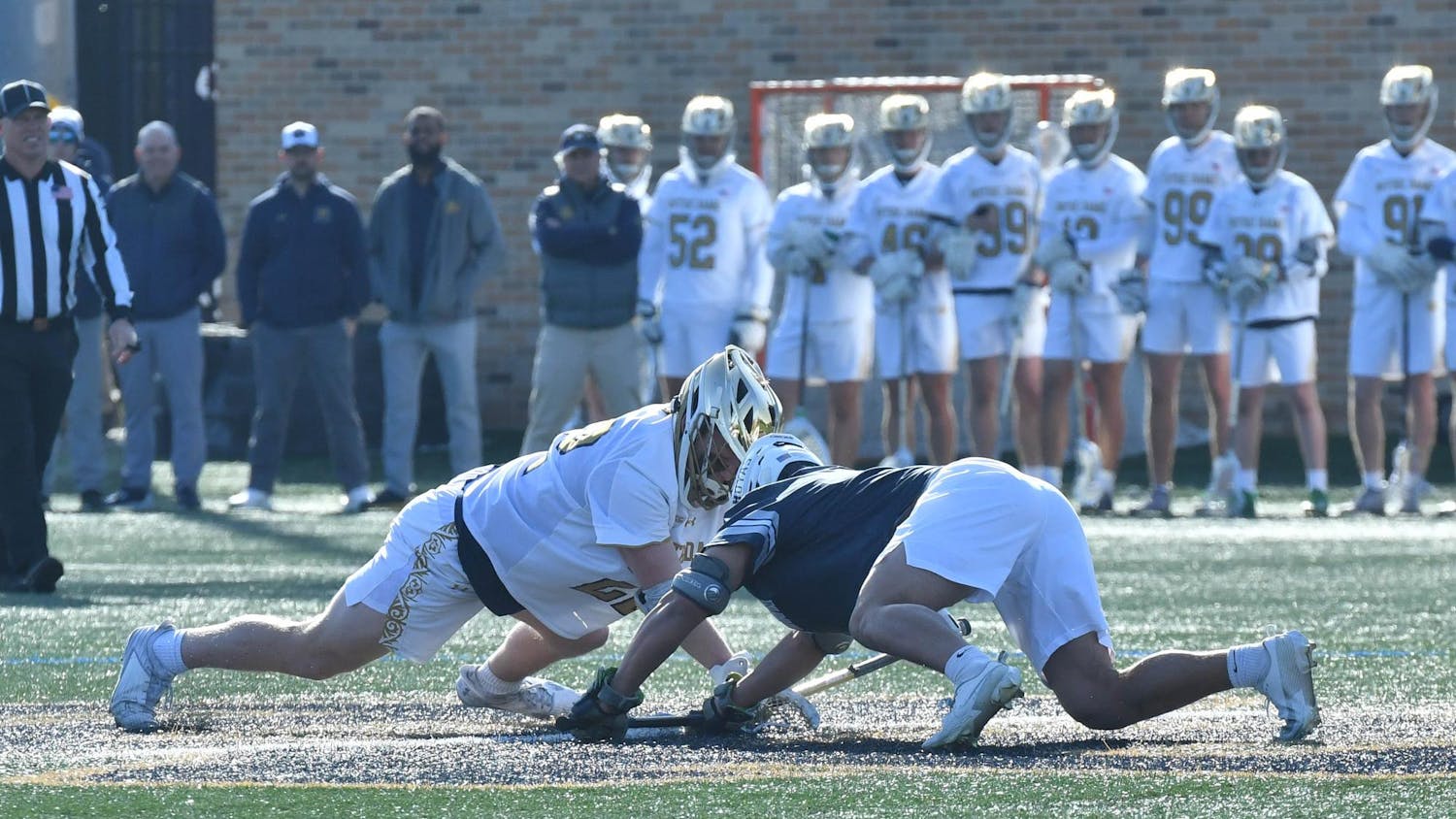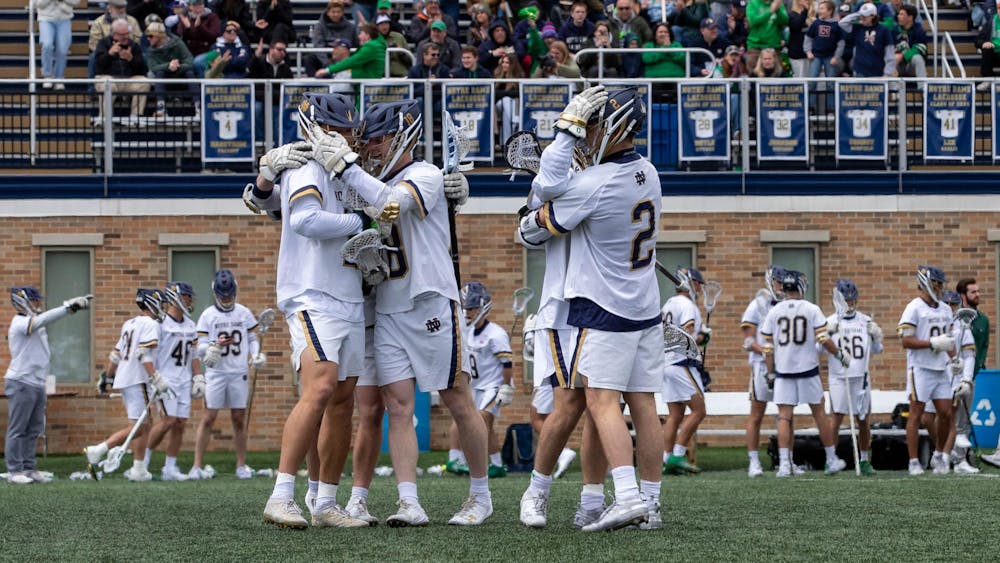Despite losing its top four fencers to Olympic training and trials, Notre Dame still captured a third-place finish at the NCAA championships and second place at the Big East tournament.
"It was a very strong and good performance, taking into consideration that we did not have our top fencers competing with the team," Irish coach Janusz Bednarski said.

The Irish were without foil competitors Gerek Meinhardt and Ariel DeSmet and epee competitors Ewa Nelip and Courtney Hurley. All of them took the year off from collegiate fencing to pursue a spot in the 2012 Olympics in London. Meinhardt and Hurley have both qualified for the Games.
As a result, several fencers had to assume the role of leaders that was vacated by graduating seniors and athletes pursuing Olympic dreams. Notre Dame quickly developed a strong culture and turned that into the key to its success.
"We had a lot of freshmen who were strong, and we had of course several seniors who were leading our team," Bednarski said. "That's one of the reasons that the season went very well. There were great relations between upperclassmen and freshmen."
The transition from club fencing and amateur fencing to collegiate fencing can be a tough one, Bednarski said. But the strong group of upperclassmen leaders on the team made it a smooth one for this year's underclassmen.
"Freshmen usually seem very lost when they are coming here," Bednarski said. "Usually it's an individual sport. So if someone is coming, it's a rival. Rivalry is one thing that is very common in fencing."
But Notre Dame was able to take intrasquad competition and turn it into a force for improvement and for camaraderie, he said.

"Often in a team competition, you have a friendship, you have better relations," Bednarski said. "Upperclassmen did a great job helping the freshmen get to a level which would they would not have been able to get to. It was not easy. Rivalry between each other can be a good thing if it is done in a friendly way."
The Irish won the 2011 national championship and wanted nothing more than to defend their crown and repeat as champions. But, the combination of the relative youth of this year's squad, the loss of the top competitors and the strength of this year's field made the pursuit of that goal an insurmountable obstacle.
Last year Hurley, Meinhardt and DeSmet were all NCAA gold medalists. This year, senior foil Enzo Castellani made first-team All-American. In the final NCAA standings, Notre Dame finished one point behind Princeton and 22 points behind Ohio State to finish third in the national tournament.
Another obstacle Notre Dame had to conquer was an abnormal practicing surface. Its strips were actually shorter than those used in competition, which made preparing to face the stiffest competition in the nation even more difficult.
"Fortunately, we are moving to the bigger space," Bednarski said. "Our mats previously were too short. We were practicing in a very hard environment, as well as without the comfort of lockers. Like for basketball, it would be like playing on a half court, or with baskets lower than usual."
If the performance of this year's young squad is any indicator, the Irish have a strong chance of returning to the medal stand next season.
"[In the future] the practices will be in the same environment that [the fencers] will be in during the competitions," Bednarski said. "This will help to speed up the process of improvement. In addition, we will also have a very good team of coaches who will be working together. I believe the fencing will be a very strong program in the coming years."
Contact Matthew Robison at mrobison@nd.edu












